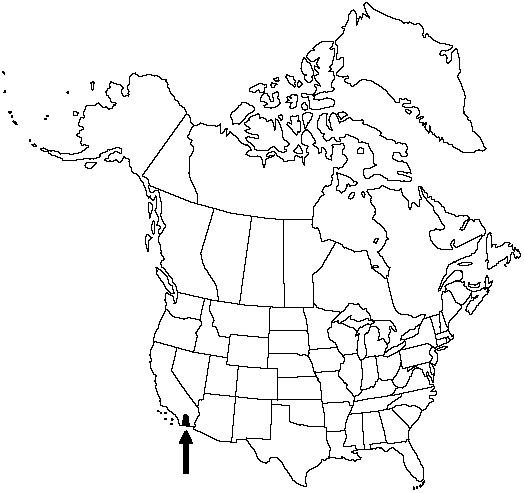Pinus quadrifolia
U.S.D.A. Div. Forest. Bull. 14: 17. 1897.
Trees to 10m; trunk to 0.5m diam., straight, much branched; crown dense, becoming rounded. Bark redbrown, irregularly furrowed and cross-checked to irregularly rectangular, plates scaly. Branches spreading to ascending, persistent to trunk base; twigs slender, pale orangebrown, puberulent-glandular, aging brown to gray-brown. Buds ovoid, light-redbrown, ca. 0.4–0.5cm, slightly resinous. Leaves (3–) 4 (–5) per fascicle, persisting 3–4 years, (2–) 3–6cm × (1–) 1.2–1.7mm, curved, connivent, stiff, green to blue-green, margins entire to minutely scaly-denticulate, finely serrulate, apex subulate, adaxial surfaces mostly strongly whitened with stomatal bands, abaxial surface not so but 2 subepidermal resin bands evident; sheath 0.5–0.6cm, scales soon recurved, forming rosette, shed early. Pollen cones ovoid, ca. 10mm, yellowish. Seed-cones maturing in 2 years, shedding seeds and falling soon thereafter, spreading, symmetric, ovoid before opening, broadly ovoid to depressed-globose when open, (3–) 4–8 (–10) cm, pale yellowbrown, sessile to short-stalked, apophyses thickened, strongly raised, diamond-shaped, transversely keeled, umbo subcentral, low-pyramidal or sunken, blunt. Seeds obovoid, body ca. 15mm, brown, wingless.
Habitat: Dry rocky sites
Elevation: 1200–1800m
Distribution

Calif., Mexico in Baja California.
Discussion
Pinus quadrifolia is the rarest pinyon in the flora. It hybridizes naturally with P. monophylla.
Selected References
None.